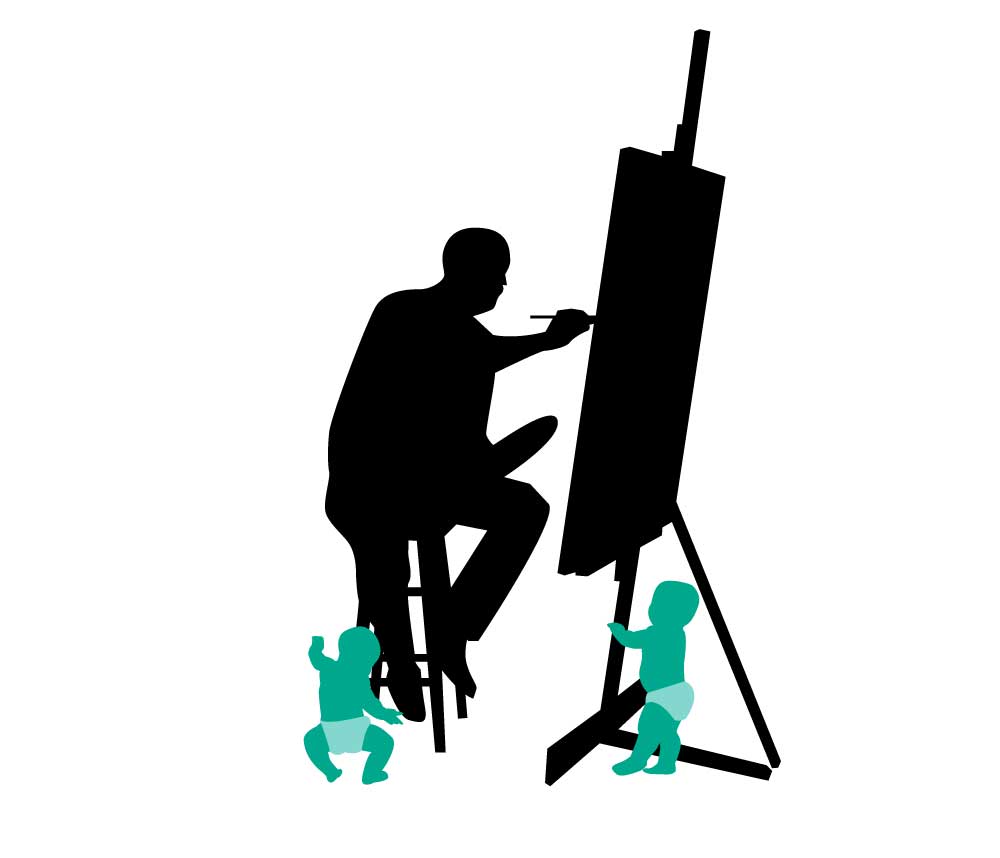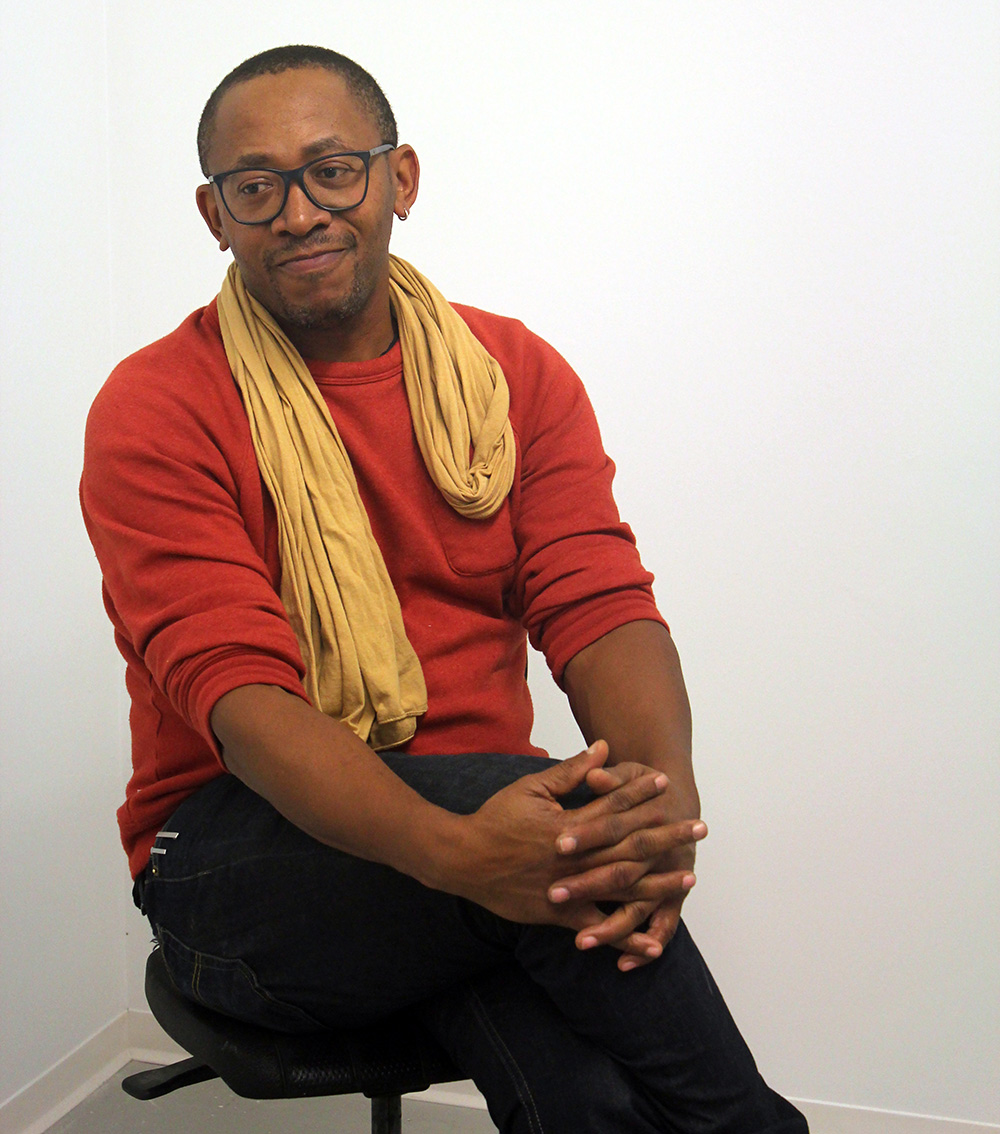How Artists with Children are Changing the Art World

“Before I became pregnant I tried to come up with a list of successful women artists who had kids, and I couldn’t think of any. That was really scary,” said Christa Donner. An artist, parent and instructor at the School of the Art Institute of Chicago (SAIC), she founded Cultural Reproducers (CR) in 2012. It is a collection of resources for artists, designers, writers and curators who are also parents.
Donner believes attitudes about artists having children are changing a bit in people of her generation, and CR is one of a handful of organizations whose work may be the reason. Older, more established people in the art world told her before she had kids that she would have to choose between raising a family or aggressively pursuing a career as a professional artist. Selina Trepp, one of Donner’s CR collaborators, was once dropped from representation by a gallery in Switzerland when its owner learned she was pregnant.
She and Trepp won a grant in 2013 from the Propeller Fund, which supports the arts in Chicago, to organize a series of parent-friendly cultural events, like artist talks that include free childcare and are held in the morning. “There’s such a divide between programming at institutions for families and that for adults,” Donner says. She and Trepp have curated the CR event series to stand, she says, as a model for institutions to rethink their approach to public events and family education.
“When our first child was born, we continued to be culturally active people,” says writer Lori Waxman. But children historically have not fit into cultural and social worlds in an obvious way and not been seen as “an appropriate component of the art world. Not to mention it’s past their bedtime.” An entire generation of women artists, Waxman says, thought they had to make a choice based on this idea. Those who did have children kept that part of their lives separate. Since those earlier days, Donner has learned of many women artists with children who did not out themselves as parents because it had the potential to negatively affect their careers. “That’s not the case anymore, but it’s not not the case. There are still galleries with no interest in showing work by women with children,” says Waxman.
There are a lot of outdated stigmas attached to motherhood in the art world, notes Lise Haller Baggesen. The Chicago-based artist and author’s practice revolves around the “mother-shaped hole in contemporary art discourse.” She felt initial pushback from faculty and fellow grad students in the Visual and Critical Studies department at SAIC about her thesis project which eventually became Mothernism, a book she published earlier this year. Baggesen cites British literary critic Cyril Connolly’s famous quote: “There is no more somber enemy of good art than the pram in the hallway.” A generation of artists, she says, took a very staunch position on motherhood as destiny, not accepting it as their own. Their legacy persists in comments like artist Tracey Emin’s recent statement to Red magazine that there are good artists with children: “They’re called men.”
But there is an even stronger factor in the exclusion of parents from the art world at some levels. “It almost feels like you forfeit your right to being a serious artist. Like you’re not committed to the cause because you also want to have kids. Like you can’t have it all,” Baggesen says. “But these ideas are really outdated clichés that for some reason still thrive in the art world.” Trepp calls the cliché a romantic notion of artists as so driven by passion that there is no room in their lives for anything but their practice. “The art world is really stacked against artists with children,” says Waxman.
Most residency programs, for instance, specifically exclude children and by extension their artist-parents. “They are built to take you out of the distracting situation of parenthood.”
With this in mind a new breed of artists with children, like those involved with CR, are taking a shot at solving the problems they see in contemporary art, as well as looking at them in entirely different ways. Logistically, they are making parenthood a part of their practices. Enemies of Good Art, a group in London, organizes events that adopt activist tactics. In 2011 they organized a flash mob of parent-artists and children at the Tate Modern museum, in which parents took turns working in a pop-up nursery so the rest could enjoy the museum. Actions like these are essentially attempts to make it clear that artists with children are simply not out-of-the-ordinary. “I’m not that interested in children; I’m interested in parents,” says Andrea Francke, a Brazilian-born London-based artist who incorporates parenthood into her practice. Her project Invisible Spaces of Parenthood, is concerned with “making motherhood normal again.”
As a society, believes Francke, people have gotten used to not having contact with children who are not theirs. She cites signs she has seen on American playgrounds that read, “Adults unaccompanied by children not allowed.” Part of her Invisible Spaces project focuses on the “invisibility of childcare and parenthood structures from non-parents and tries to raise the economical, social and political issues involved,” she says.
“The art world represents a very limited sliver of what life is,” says Trepp, “and art is a way of thinking about those more complex visions.” She is afraid that if artists don’t have a space where they can afford to have children — both financially and socially — then it will leave those artists to be defined by other people in the art world. It is this claiming of space for artists with children that all of these groups and individuals share. Baggesen sees the art world as a place where “we can really have a go at reshaping these clichés.” In image-making the mother is relatively unrepresented in contemporary art, she says. It is the responsibility of artists to be aware of this and to interrogate how roles like parenthood are being encoded in contemporary life.
Broodwork, a Los Angeles-based organization, has made an aggregate of the stories of artists, designers, architects, writers, policy-makers and historians — what collaborators Rebecca Niederlander and Iris Regn call “creative practitioners.” Founded in 2009, their website collects stories that celebrate the interweaving of creative practice and family life and create “a previously unspoken community of practitioners whose work realized an unexpected perspectival shift after becoming parents,” according to their website. “We look at whether people change their ecological perspective, do architects turn to greener materials, does the work change,” says Niederlander “What can creative practices bring to parenting and vice versa?”
She and Regn see being a parent as a profoundly important aspect of being human. Creative practitioners create out of their own experience, and for artists with children being a parent is part of that. “We don’t make art about being parents,” Regn says, “We look at anything that has to do with creative practice and parenthood.” For instance, they have found that parent-artists are in many ways more productive than they were before the birth of their children, because they must work whenever they have the time. “I tell Oscar, my son, he’s the reason I have a career,” quips Francke. “I’ve never been more productive now that I have a kid, because you have to be so strict in your production.”
Broodwork’s practice treats the current moment in creative practice, in the wake of the recent economic downturn, as a position where artists can redefine what it is to be an artist and a parent. “Do we want to be a part of the gallery system, do we want to do it in a different manner, is social practice a way to integrate what we think about the world with what we see is out there in the art world,” says Niederlander. “We’re redefining how we make a career.”
She and Regn feel that parenthood is fertile ground for opportunities to further creative practice. They treat parenthood as a democratic impulse, crossing demographic, economic and cultural lines. Broodwork works toward the treatment of parenthood as something that crosses professions. “If you have to leave early to pick up your kid in the art and design world, it’s frowned upon as meaning you’re not serious about your work,” Regn notes. “I want them to be able to say, ‘I’m an amazing artist, and I’m leaving early to pick up my kid, and I’m looking forward to it.’”
Work still needs to be done at the institutional level, as well, says Donner. When CR’s lecture series concludes, she plans to form a consulting group to help the education departments at museums, for example, use the information CR has collected to find new ways to accommodate artists with children, a significant portion of their audiences. “A lot of people are interested in these models,” says Donner, “and I think institutions are responsible to consider that.”
Waxman asserts that the art world should be set up for artists who are in any situation. If it is not, she says, then it is discriminatory, potentially causing us all to lose out on a great deal of incredible art. It is true that all of these organizations are no more than five years old, perhaps because more artists with children are asking why parenthood should be any different for artists than for parents working in other fields. Artists and groups like Cultural Reproducers are making it clearer each day that having children is not career suicide for creative practitioners. “If you’re a strong artist,” says Waxman, “parenthood is just going to make your work better.”







